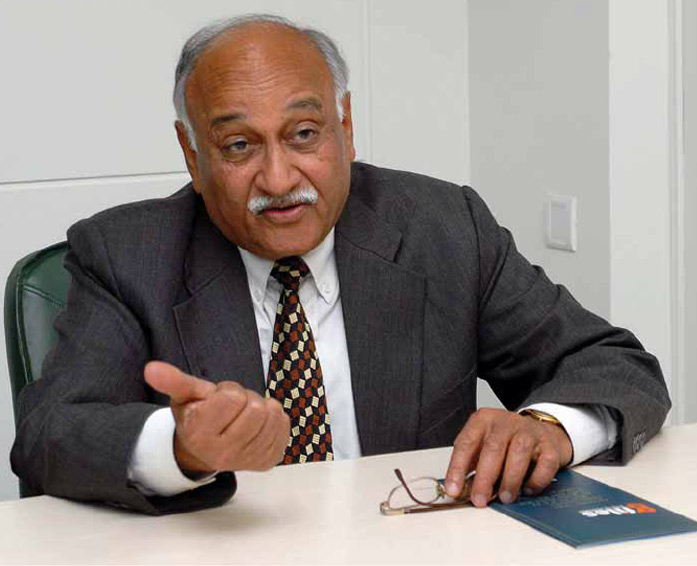THE idea of a career in the administrative services was not mine. I was barely 13 years old and about to give my Class IX examination, when my father, a professor, advised me that I should plan to get into the IAS rather than follow him as an engineer.

My only perception of the IAS and its predecessor, the ICS, was that of all-powerful district magistrates and formidable collector sahibs issuing prohibitory orders like Section 144 of the CRPC. I was a child during the pre-Partition and Partition riots. I remember a public relations person sitting in an open tonga announcing the collector’s diktats.
Some years later I was to realize that being an IAS officer meant much more than enforcing law and order. The career was a noble call to national service that would also give me status and social support. India was newly independent. Young men like me were suffused with idealism.
After being selected for the IAS, I was posted in Haryana as an officer of the state’s cadre. At that time, Haryana was among the most backward states of the country. Nobody could have imagined that it would become a front-running state in the years to come.
I was posted as deputy commissioner, Mahendragarh in Narnaul in 1967 during the Rao Birender Singh regime, but left for a central deputation in 1968 and joined the department as a fresh entrant. I returned to the state in 1972. Thereafter till my retirement in 1997, I continued to alternate between the state and central governments.
When I was recalled to the state during Chaudhary Bhajan Lal’s regime to become Haryana Chief Secretary for the third time in 1995. I was then the Industry Secretary to the Government of India. One of my peers called up and asked me my feelings about returning as chief secretary for the third time. I replied that it felt like getting married to the same woman for the third time.

I went to see Chief Minister Bansi Lal on official work. He asked me to sit comfortably before I could even open the official discussion. He asked me to compare him with Chaudhary Bhajan Lal as Chief Minister
Times have changed and along with them, value systems. Globalization has made its impact upon society and governance. Things are vastly different from what they were in the1950s and ‘60s. There is a new dynamism in the air all across India. But this is nothing new to Haryana. Since its inception as state it quickly developed a culture of quick decision-making, and transmitting them to the lower levels of government. Haryana’s per capital income for the last year is the second highest in the country – a little over Rs. 31,000 at current prices, second only to Goa. As I said, the Haryana of today is very different from the Haryana of 1966.
I was closely associated with four chief ministers of Haryana: Chaudhary Bhajan Lal, Bhagwat Dayal Sharma, Chaudhary Devi Lal and Chaudhary Bansi Lal. All four were unique. In fact, once when I was Chief Secretary (for the third time), something interesting happened. I think, it was in 1996. I went to see Chief Minister Bansi Lal on official work. He asked me to sit comfortably before I could even open the official discussion. He asked me to compare him with Chaudhary Bhajan Lal as Chief Minister.
Even for an officer who had been in civil service for 36 years, this came as a googly. I decided to play with a straight bat. I asked him whether I could compare three of them –. Chaudhary Devi Lal and Chaudhary Bhajan Lal and him. He asked me to go ahead. Tea was served in the meantime and I had a couple of minutes to collect my thoughts.
I told him that Chaudhary Devi Lal was essentially a big landlord, a large hearted person. He had neither the time nor the desire to go into details. Also, he was quite credulous. Turning to Chaudhary Bhajan Lal, I said that he was very suave and generally a nice person. He believes and tries to respect all those who are worthy of respect. He is so nice in his personal relations that you are not sure whether he is really happy or not. As for Bansi Lal, I told him that it was difficult to describe you on your face. But in his register, there was no column for pardoning people. Once he was annoyed with anyone, it was difficult for that person to regain his favour. I told him in his new avatar he was accommodating and straightforward.
An another event remains indelibly etched in my mind. I was Home Secretary when Banarsi Das Gupta was chief minister. In 1976, during the emergency, he did not pressure officers to do anything wrong. I recall one major incident of the time.
Other Chief Ministers
Pratap Singh Kairon
 I can readily recall with that Kairon was a towering personality; not too tall nor the typical Jat Sikh, but there was something that made you respect and even fear him. I remember at least two meetings with him when I was a very young sub-divisional Magistrate. He spoke with lot of variety and conviction. He could be extremely pleasant and even friendly when he wanted and he could also equally be tough.
I can readily recall with that Kairon was a towering personality; not too tall nor the typical Jat Sikh, but there was something that made you respect and even fear him. I remember at least two meetings with him when I was a very young sub-divisional Magistrate. He spoke with lot of variety and conviction. He could be extremely pleasant and even friendly when he wanted and he could also equally be tough.
Comrade Ram Kishan
He was a simple individual so who hardly left a lasting impression.
Pandit Bhagwat Dayal Sharma
 He was an astute politician but very open, very friendly and still holding on to some values. Later his son become a minister in the state.
He was an astute politician but very open, very friendly and still holding on to some values. Later his son become a minister in the state.
Rao Birender Singh
He came from a free and strong background and even in the defence forces when he joined the ministry in public life. He was also a smart politician. His son Rao Inderjit Singh is the Minister of State for Defence in the Union government.
Mani Ram Bagri, Member of Parliament, was in jail under MISA (Maintenance of Internal Security Act) at Rohtak and he was ill. One day I received a telephone call from the District Magistrate, Rohtak Miital that Bagri was critically ill. He suggested that Bagri be released from jail on parole. I told him that we had already sanctioned three months parole to Bagri. Mittal said that Bagri is adamant that he does not want a conditional release and would not agree to parole.
As for Bansi Lal, I told him that it was difficult to describe you on your face. But in his register, there was no column for pardoning people. Once he was annoyed with anyone, it was difficult for that person to regain his favour
It was morning, I asked him to call me in the evening at five when I would give the government’s decision. I tried to contact Banarsi Das Gupta who was also the Home Minister. I could not contact him as he was travelling, addressing public meetings.
The district magistrate called at five in the evening. I told him that I had not been able to contact the chief minister. I asked him to consider all factors and when he reaffirmed Bagri was critically ill, I asked him to revoke the MISA order and release him forthwith. Mittal was shocked that I had not obtained the chief minister’s order. I quietly told him that I was conveying to him the orders and he should carry them out. I asked him to confirm the release within one hour.
Around 9 in the night, the Chief Minister called me from Narnaul and asked me about the matter since I was trying to get in touch with him. I told him as to what had happened and that I had ordered the release of Mani Ram Bagri and that I am sending file for his approval. The Chief Minister held on to the telephone silently for a minute and then he told me it’s all right. The following day I sent the file up regarding the case and I got it back the following day with his approval.
As told to Anil Tyagi
(published in gfiles, April 2007)

































































